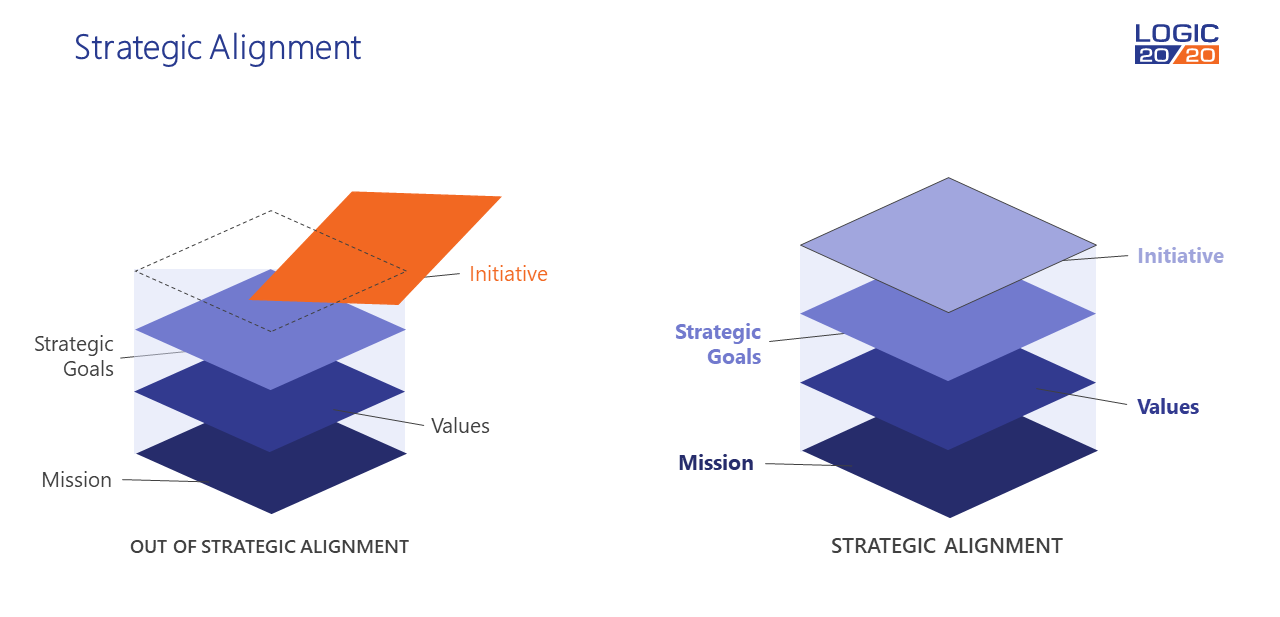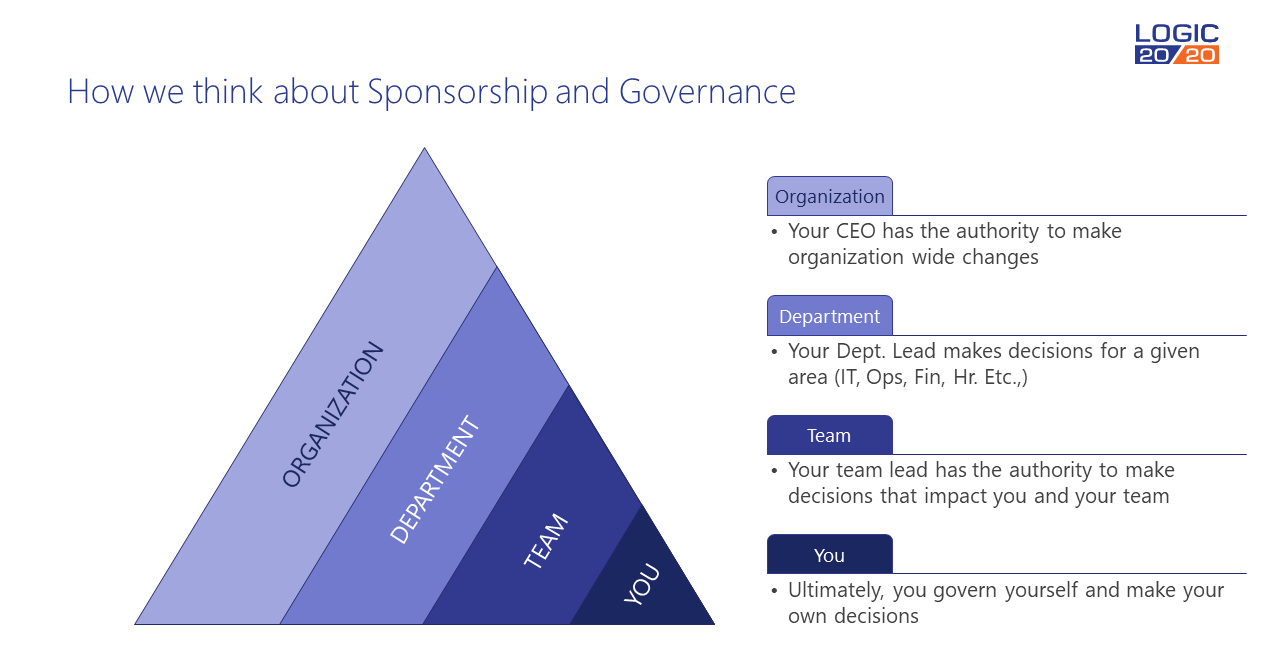8-minute read
Quick summary: The first step of Logic20/20’s approach to successful I.T. adoption through change management is strategic alignment. This article examines the three tenets of strategic alignment.
In the first article in our series on change management, we looked at some reasons why initiatives and transformations fail and shared our four-step approach for overcoming these roadblocks. Today we’ll look more closely at Step 1 in that approach: strategic alignment.
Like most things, if you rely on getting lucky or happenstance to provide you with the desired outcome, you’ll miss more than you hit…I doubt your strategy for funding college involves a slot machine. The same goes for getting your initiative positioned for success. If you allow your governance, organizational environment and messaging to develop without intent, you risk failure.
Turn that around, however, take a proactive and intentional approach toward cultivating the right environment for success, and you turn the odds drastically back into your favor.
These tenets to strategic alignment will help you avoid common pitfalls:
1. Get it straight! Your initiative must align with enterprise mission, values, and strategic goals.
2. Representation for all: Strategic alignment needs to infiltrate through multiple layers from sponsors to end-users.
3. It’s hard to work alone in a crowd: Don’t let your initiative be left to compete for focus due to too many other competing priorities.
Get it straight! Your initiative must align with enterprise mission, values, and strategic goals.
This is equally true at conception as it is at close. If you can’t make that connection clear, concrete, and inarguable, it will be difficult for you to win over those who are reticent to change. The more your initiative strategy reflects organizational goals, the less it will seem to “come out of left field” to the people it impacts and the easier it will be to turn your managerial and executive peers into champions.
When stakeholders and users see your work as part of a larger picture—and understand how it all fits together, change can be experienced as empowered participants.

Representation for all: Strategic alignment needs to infiltrate through multiple layers from sponsors to end-users.
We so often see technical teams targeting end-user engagement, which is awesome! That said, when we forget representation at the sponsorship and governance levels, we leave end-user level of engagement to chance. Sponsorship commitment to the initiative needs to be consistent and lasting through the entire lifecycle of the initiative.
The critical importance of executive sponsorship coming from the right level cannot be emphasized enough.

When we launch initiatives and transformations, we start with the footprint of the initiative to ensure our governance is representative and our sponsor well positioned.
The ‘footprint’ – To a change manager this might be an Org. Impact Assessment. To the lay person, you can think of this as shoe size…if you build your governance for a size 4 when you actually have a size 11…you can accidentally build a lot of risk into your initiative right from the start.
Strategies developed in isolation often fall flat when they fail to consider the organization’s broader goals and priorities. The solution to this isn’t further siloed analysis, but a truly inclusive, representative coalition of collaborators. This means successful adoption starts at an initiative’s inception, not in its final ramp to go-live.
It’s hard to work alone in a crowd: Don’t let your initiative be left to compete for focus due to too many other competing priorities.
You need to make space for your initiative to thrive and hold it.
If unable to re-position the initiative, it is essential to identify and articulate to leadership the impacts of conflicting initiatives – on bandwidth, on resistance, and ultimately, on overall likelihood of successful adoption.
Along with maximizing bandwidth, intentionally creating space for your initiative is an opportunity to take stock of the current enterprise ‘lay of the land’ and examine how your efforts can complement, leverage, and align with other relevant initiatives. If you’re wondering how this happens, think about the criteria your portfolio managers are using to bring initiatives online, or go further and consider an elevated Organizational Change Management role at the portfolio or executive level.
In the next three articles of the series, we’ll explore in depth how each of these steps helps ensure successful I.T. adoption and creates engaged, enthusiastic users. If you have any questions in the meantime, feel free to contact us.
Like what you see?

Fadi Salah is a manager in Logic20/20’s Strategy & Operations practice.

Beau Platte is a manager in Logic20/20’s Strategy & Operations practice.

